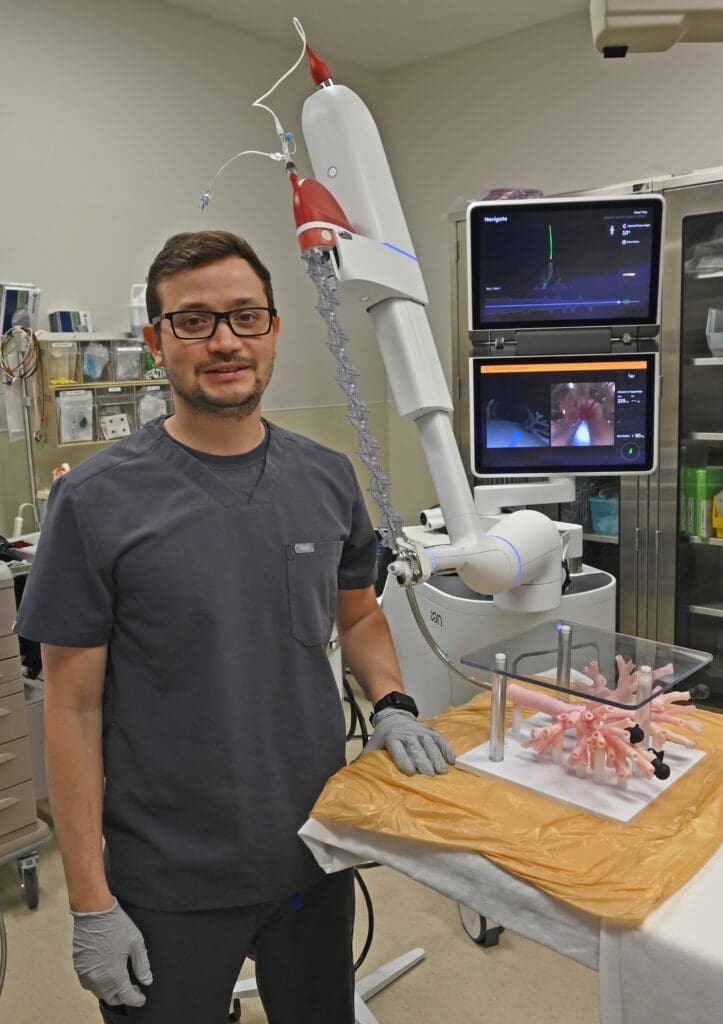Lung cancer is the leading cause of cancer-related deaths in the United States, but early detection significantly improves survival rates. Salina Regional Health Center has recently adopted new technology that enables doctors to identify lung cancer at earlier stages with less invasiveness.
Dr. Jorge Cedano uses the Ion Robotic-Assisted Bronchoscopy system to examine and biopsy nodules deep in the lungs. This system involves a thin, flexible catheter that enters through the mouth and airways, allowing a real-time view of the lungs guided by a CT scan. Once the catheter reaches the suspicious nodule, precise biopsies can be taken.
The Ion system is generally safer than traditional methods, like needle biopsies, and is done as an outpatient procedure.
“This is something that changes people’s lives, changes people’s prognosis, and also is safe,” Dr.
Cedano said. “We now can get very small nodules out in the periphery of the lung that we couldn’t get
before.”
People at higher risk for lung cancer, including former smokers or those with a family history of lung cancer, often get regular low-dose CT scans. If these scans reveal suspicious spots, a biopsy is recommended to check for cancer. Lung cancer found in early stages (Stage I or II) is usually treatable, but symptoms often don’t appear until the disease has progressed, making early detection critical.













